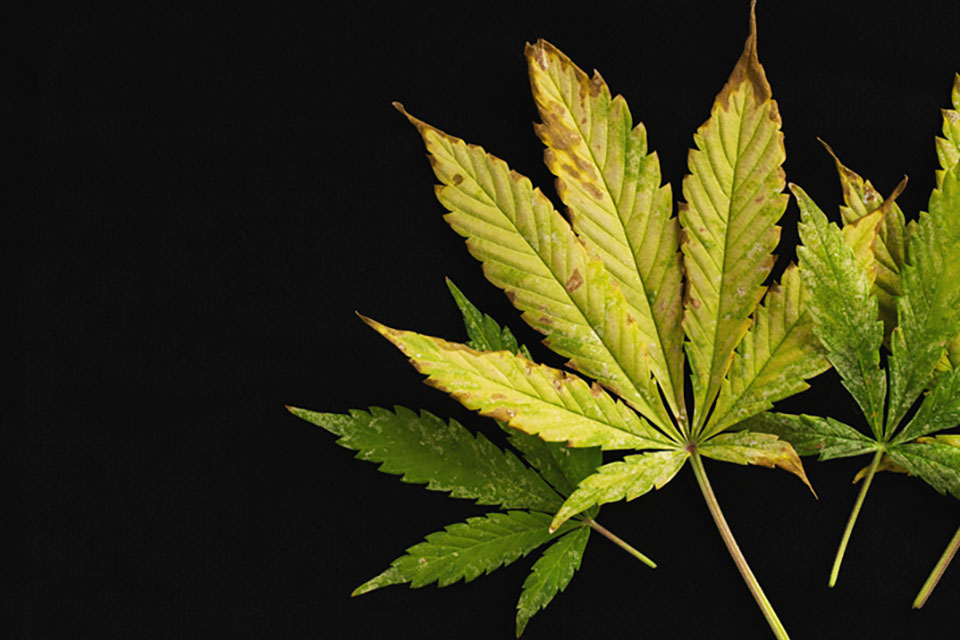
Understanding cannabis leaves is a crucial aspect of cultivating healthy and thriving plants. Cannabis leaves serve as indicators for various factors, including nutrient deficiencies and excesses, pest and disease presence, and environmental stress signals. By carefully observing and interpreting these leaf patterns, home growers can make informed decisions to optimize their growing conditions and achieve successful cultivation with Kind Seed Co.’s cannabis seeds. Dive into the world of cannabis leaves and discover the insights they hold for home growers.
What Cannabis Leaves Can Reveal
Cannabis leaves are the storytellers of the plant. From their structure to their color, they communicate vital information about plant health and environmental conditions. Understanding this leaf language can significantly enhance our understanding of what cannabis leaves reveal about their overall well-being.
Nutrient Deficiencies and Excesses
Cannabis plants require a specific balance of nutrients to thrive. Too little or too much of any nutrient can manifest in the leaves. For instance, yellowing leaves might indicate a nitrogen deficiency, while a purplish hue could signal a phosphorus excess. Similarly, brown spots on the leaves could be a sign of calcium deficiency, while curling or “clawed” leaves could be due to overfertilization.
Nutrient imbalances can impact cannabis plants’ health, growth, and yield. New growth will be affected first, and if left unchecked, nutrient problems can lead to stunted growth, reduced yield, or even the death of the plant. Understanding these visual signs allows for quick and effective correction, leading to healthier and more productive plants.
Pest and Disease Indicators
Bugs, mites, fungi, and bacteria can all leave telltale signs on cannabis leaves. Speckled discoloration may indicate spider mite infestation, while a white powdery residue might suggest powdery mildew. Similarly, brown spots or patches could point to leaf septoria, a common fungal disease in cannabis plants.
Early detection of pests and diseases is vital to implementing successful treatment strategies. Regular leaf inspection, proper sanitation, and balanced nutrient management can prevent many common cannabis pests and diseases. When an infestation or disease is identified, appropriate treatments such as insecticidal soaps, organic fungicides, or biological controls should be applied promptly.
Environmental Stress Signals
Leaf conditions can provide insights into the environmental stress the plant might be experiencing. Leaves curling upwards might be trying to avoid excessive light or heat, while drooping leaves could indicate overwatering or high humidity. By observing these stress signals, home growers can make necessary adjustments to their growing environment. This might involve adjusting light intensity, positioning, temperature, or the watering schedule or humidity levels. By doing so, they can create a more conducive environment for their cannabis plants to thrive.
Interpreting Cannabis Leaf Patterns
Understanding cannabis leaf shapes, sizes, and arrangements can provide a lot of information about your plant’s health and potential yield. For example, narrow leaves could indicate a Sativa strain, which generally has higher THC content and thus produces a more cerebral high. In contrast, broad leaves are typical in indica strains, which generally contain more CBD and have more relaxing effects.
Influence on Plant Development and Yield
The leaf morphology also influences the plant’s development and yield. Large, healthy leaves contribute to vigorous photosynthesis, leading to strong growth and higher yields. Any abnormalities or changes in leaf growth patterns should be noted, as they could signal potential issues affecting the plant’s health or productivity.
Leaf Color and Pigmentation
The color and pigmentation of cannabis leaves can reveal a great deal about their nutritional status and overall health.
Significance of Different Leaf Colors and Pigments
Healthy cannabis leaves are usually a vibrant green, indicating proper chlorophyll production and efficient photosynthesis. Yellowing leaves could suggest nutrient deficiencies, while purplish or reddish leaves might signal a phosphorus excess or exposure to cold temperatures.
Implications for Plant Health and Quality
Leaf color can significantly impact the quality and potency of the cannabis yield. Leaves that are not a healthy green could suggest issues such as disease, pest infestation, or nutrient imbalance, all of which can negatively affect the quality of the final product.
Techniques for Leaf Analysis
Understanding what cannabis leaves can tell you requires a combination of testing methods and careful visualization.
Leaf Tissue Testing Methods
Through leaf tissue testing, you can accurately identify the nutrient composition of your cannabis plants. This can help you detect any nutrient deficiencies or excesses and adjust your nutrient management strategy accordingly.
Visual Inspection and Monitoring
Regular observation and comparison of leaf conditions over time can provide a wealth of information about your crop’s overall health and well-being. Integrating this with other plant care practices like regular watering and nutrient feeding can greatly enhance your cannabis cultivation success.
Applying Leaf Insights to Home Growing
Utilizing the information gathered from leaf observations can help home growers adjust their cultivation strategies for better yields. Adjusting nutrient and watering regimes, pest and disease management strategies, and optimizing environmental conditions based on leaf analysis can significantly improve the overall health and productivity of your cannabis crop.
As we have seen, cannabis leaves can provide an abundance of essential information for home growers. Leveraging leaf insights can not only help you address current issues your plants might be facing but also set the stage for future successful and productive cultivation with Kind Seed Co. cannabis seeds. Remember, the health of your plants is in your hands, and with the right knowledge and skills, you can grow a thriving cannabis crop.



